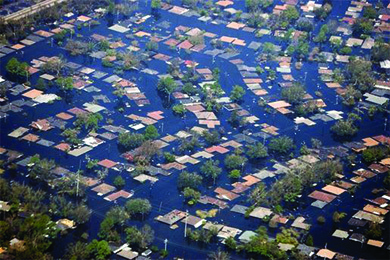| << Chapter < Page | Chapter >> Page > |
The Bush administration had planned a series of free-market reforms, but corruption, scandals, and Democrats in Congress made these goals hard to accomplish. Plans to convert Social Security into a private-market mechanism relied on the claim that demographic trends would eventually make the system unaffordable for the shrinking number of young workers, but critics countered that this was easily fixed. Privatization, on the other hand, threatened to derail the mission of the New Deal welfare agency and turn it into a fee generator for stock brokers and Wall Street financiers. Similarly unpopular was the attempt to abolish the estate tax. Labeled the “death tax” by its critics, its abolishment would have benefitted only the wealthiest 1 percent. As a result of the 2003 tax cuts, the growing federal deficit did not help make the case for Republicans.
The nation faced another policy crisis when the Republican-dominated House of Representatives approved a bill making the undocumented status of millions of immigrants a felony and criminalizing the act of employing or knowingly aiding illegal immigrants. In response, millions of illegal and legal immigrants, along with other critics of the bill, took to the streets in protest. What they saw as the civil rights challenge of their generation, conservatives read as a dangerous challenge to law and national security. Congress eventually agreed on a massive build-up of the U.S. Border Patrol and the construction of a seven-hundred-mile-long fence along the border with Mexico, but the deep divisions over immigration and the status of up to twelve million undocumented immigrants remained unresolved.
One event highlighted the nation’s economic inequality and racial divisions, as well as the Bush administration’s difficulty in addressing them effectively. On August 29, 2005, Hurricane Katrina came ashore and devastated coastal stretches of Alabama, Mississippi, and Louisiana. The city of New Orleans, no stranger to hurricanes and floods, suffered heavy damage when the levees, embankments designed to protect against flooding, failed during the storm surge, as the Army Corps of Engineers had warned they might. The flooding killed some fifteen hundred people and so overwhelmed parts of the city that tens of thousands more were trapped and unable to evacuate ( [link] ). Thousands who were elderly, ill, or too poor to own a car followed the mayor’s directions and sought refuge at the Superdome, which lacked adequate food, water, and sanitation. Public services collapsed under the weight of the crisis.


See pictures of the aftermath of Hurricane Katrina and read and view accounts of survivors of the disaster.
Although the U.S. Coast Guard managed to rescue more than thirty-five thousand people from the stricken city, the response by other federal bodies was less effective. The Federal Emergency Management Agency (FEMA), an agency charged with assisting state and local governments in times of natural disaster, proved inept at coordinating different agencies and utilizing the rescue infrastructure at its disposal. Critics argued that FEMA was to blame and that its director, Michael D. Brown, a Bush friend and appointee with no background in emergency management, was an example of cronyism at its worst. The failures of FEMA were particularly harmful for an administration that had made “homeland security” its top priority. Supporters of the president, however, argued that the scale of the disaster was such that no amount of preparedness or competence could have allowed federal agencies to cope.

Notification Switch
Would you like to follow the 'U.s. history' conversation and receive update notifications?